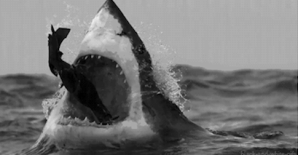Your Startup Is Bigger Than You
After interviewing high level business pioneers and making headway on their book, here’s a big take-away: Most people have heard the phrase, “Know your *WHY* ” But what does it really mean and how do you apply it for sustainable success?

A little history lesson in product/service development and sales: Most young entrepreneurs mistakenly believe that their innovative product is king. Wrong. Others think it’s about the content–make sure your marketing and branding strategies are on-point, and you can fill the box with just about anything. Wrong. Oh, you might find a limited amount of profit and success that way, but you’ll also find it fizzling out, and you’ll need to scramble to find the next big thing to saty in the game, virtually starting over from scratch. That’s not sustainability. That’s grit (which is a great quality, but it’s not sustainability).
Instead, “Know your *WHY*” dictates that you understand what you want your product or service to do, and you get committed to that outcome. For instance, your *WHY* may be that you want to help people come together and connect at a table together, share stories and build relationships, because people are feeling alone and disconnected. That’s your *WHY* To answer that, you might productize bottles of wine for people to share together, but what your selling is a social tool meant to provide a shared experience more than a mere product or service.
Also, to really be sustainable, your *WHY* can’t just be about something that’s meaningful to you in a vacuum. It needs to be responsive to or reflective of a cultural need. In this case, data show that people want to put money in experiences and they crave connection. So, your *WHY* of wanting to help people come together and connect at a table, share stories and build relationships answers the cultural need for interpersonal connection and shared experiences.
Now, here’s the thing, because your focus is on your *WHY* and not the singular product (e.g. wine), when you expand or scale and decide to add new products/services to your offerings, they needn’t be more wine. They merely have to be reflective of your *WHY* So, a social club, exotic tours and retreats, books designed for book clubs and other groups, film festivals and other events, etc. all can be positioned to answer your *WHY* keeping you relevant even if drinking wine goes out of style (Although, I dare not think of such a travesty!).
#startup #whystatement #scale #strategicplanning #thinkbig #business #entrepreneur #legacycompany
 You need to know your *WHY* but whether you consider that to be personal or universal will greatly affect the scale and ultimate sustainability of your business.
You need to know your *WHY* but whether you consider that to be personal or universal will greatly affect the scale and ultimate sustainability of your business.





